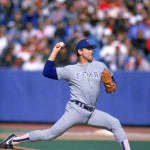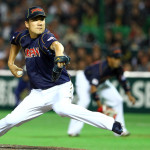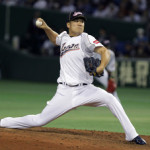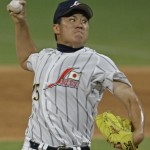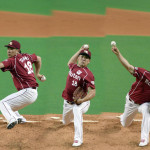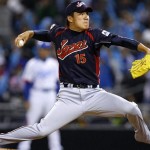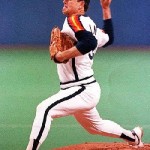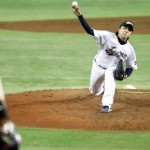Nolan Ryan was Baseball’s greatest pitcher (and a timeless example for all “wannabes” to emulate), not only because of all the records he set, but also for his ability to stay healthy for so many years in order to set those records. His blazing fastball, “off-the-table” curveball, debilitating change-up, his “tactical” control, and his competitive spirit were the defining attributes of his incomparable mounds-man-ship.
Most people think that he was of an uncommon breed of ballplayer whose physical strength was the criterion by which he would be judged so competently. But there are many strong-bodied pitchers in Baseball who don’t make it to the Big Leagues. And there are varying degrees of finesse in those who do make it to the Major League level.
Nolan Ryan is at the top of list of outstanding pitchers in Baseball history because he fine-tuned his pitching mechanics to a point near-to-perfection better than any other pitcher (past or present). It was the ultimate use of proper “mechanics” that not only fostered the most economically sound use of his body to control and propel the baseball with maximum intent, but also secured an unusually long career.
When he began his Big League play with the New York Mets, he was a typically promising “fire-balling” physical “phenom” who didn’t have a clue as to how to maximize his efforts with power, control and endurance. Wildness and injuries plagued him until he figured out a semblance of mechanical efficiency while playing for the Angels. As he progressively redefined his body mechanics he was able to sustain higher efficiency ratings in his pitching performances as well as maintain a relatively high capacity to avoid arm and shoulder injuries.
The application of sound mechanical principle to his “art” of pitching is undeniable, but very seldom duplicated by the current stock of “pitching” professionals. If Nolan Ryan hadn’t changed from the style of his youthful days of undefined ignorance, he would not have sustained what turned out to be a long and illustrious career.
Maximum efficiency for a pitcher includes the following components:
1) Maximum velocity (95 to 100MPH);
2) Fast breaking Pitch;
3) Desirable control (strikes, but avoiding the center of the plate);
4) Endurance (100 to 140 pitches- 7-9 innings);
5) Longevity (15 to 20 years of peak performance)
There are some Major League pitchers who are bigger and stronger than Nolan Ryan was. And some of them throw harder than he did. But there are none who have the mechanical potential to experience his productivity, longevity and injury-free accommodation – until Now!
Curt Schilling, and Randy Johnson (who was tutored somewhat by Ryan) were two who had the best chances to “survive and achieve,” and they did. Currently, the Pitcher with the “Best -Mechanics” in all of professional Baseball is Masahiro Tanaka. The common denominator for all four of these masterful mounds-men is the simple fact that none of them straightened his pitching-arm as he began and continued the action through the course of his delivery until after the forward momentum of the turning backside of the body catapulted the shoulder, bent-arm and ball toward the plate.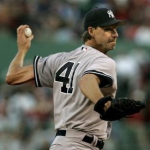
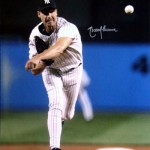
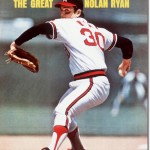
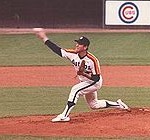
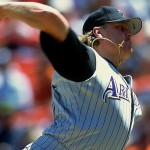
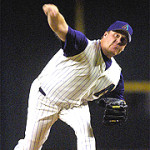
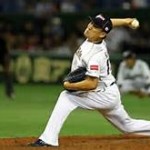
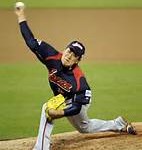
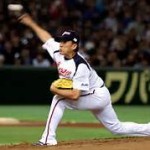
At that point, the arm began a straightening process that quickly and briefly extended it forward with the follow-through. The leverage that the bent arm provides diminishes the weight imposed on the shoulder and elbow, thus fortifying their strength to implement function with speed, control and optimal force. The lighter the weight, the faster the shoulder will rotate, and the faster and more accurately controlled will be the ball as it leaves the hand of the pitcher whose total body mechanics are intact.
The only fallible aspect of Nolan Ryan’s delivery was his high front-leg kick as he began his delivery. Most unscientific minds (and possibly Nolan himself) have wrongly accredited the “high leg kick” as an aspect of his success, but it was wasted motion, and compromised his status when a runner was on base. Runners could steal more easily because of the wasted and time-consuming movement. The move is wasteful because the foot has to come down to a low position before the forward body-drive begins (which is really initiated by the back bent-knee, driving forward).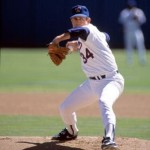
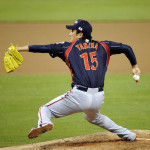
Pitchers think that the leg-momentum coming down from the “wind-up” contributes to the power drive. Actually it does nothing except waste energy that could be conserved for more practical use. The “power-drive” doesn’t begin until the front foot is near the ground.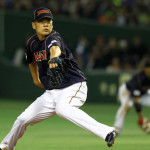
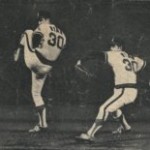
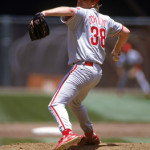
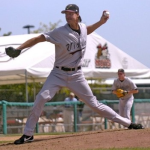
Most often the strongest and most promising of physical specimen incur the wrath of such blatant disregard for physical limitation. A prime example that comes to my mind was Darren Driefort, associated with the Los Angeles Dodgers. Darren had shown great promise until undue strain to his pitching arm necessitated elbow surgery. After a second surgery was precipitated after he continued in his previous ritual of improperly 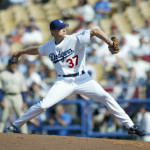 .
.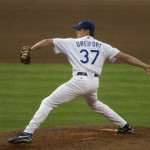
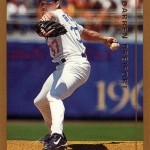 implemented mechanics, his Baseball career ended.
implemented mechanics, his Baseball career ended.
Maximum efficiency for a pitcher includes the following components: 1) Maximum velocity (95 to 100MPH); 2) Deceptive Change-up; 3) Fast breaking Pitch; 4) Impeccable control (strikes, but avoiding the center of the plate); 5) Endurance (100 to 140 pitches- 7-9 innings); 6) Longevity (injury-less-enabling 15 to 20 years of peak performance); 7) Base-stealing deterrent (quick move to plate – no wasteful motion). Even Nolan Ryan did not possess the last attribute, but he could have.
All of the preceding components can be easily attributable to every single, able-bodied Big League pitcher of the modern era, if each would first subscribe to one critical facet of a primary pitching principle that differentiated “Nolie” from every other pitcher. The axiom would read as follows: “the farther the ball moves away from the body, as the arm is preparing to deliver the pitch, the heavier the weight will be to the stress and strain of the elbow, shoulder and torso” (not to mention “to the speed” of the throwing action).
The following pictures illustrates the GOOD VS. BAD! Masahiro and Nolie –
And Darren Driefort: It’s a shame, because he was a great athlete with great potential.
To correlate the six components to optimal pitching production the following comments will clarify the propositions:
1) A powerfully built athlete, who presumably establishes his power base from a low center of gravity, needs only to facilitate a mechanism for quickly manipulating the strength of the actual throwing apparatus (the shoulder). The lighter the weight on the arm, the more economical will be the movement of the shoulder to manipulate the arm. The straighter the arm and the farther its hand is extended away from the body the heavier it will be for the shoulder to manipulate quickly. Reduction of the speed of the shoulder will ultimately reduce the speed of the ball when it eventually leaves the hand of the pitcher. Therefore, the result is a failure of the pitcher to fulfill his maximum potential.
2) The hardest throwing pitchers usually have the fastest breaking-pitches, because of the power of the body that has a low center of gravity, and the speed of the shoulder as it moves the arm quickly through the tight range of motion as the fingers and hand provide the appropriate pressure.
3) As a dart-thrower (with bent arm) is more apt to demonstrate more control than a “long-armer,” so the efficiency quotient for the optimum in accuracy is bound to be in favor of him who has to negotiate a less cumbersome task.
4) A pitcher is a finely-tuned “piece of equipment.” Maximum efficiency rating is based on his workload over time, and predicated on the strength of the individual components comprising the collective integrity of the “Unit.” He is only as strong as his weakest link. Maximum output may be good for a minimum of time before the weak link destructs and the mechanism fails. Masahiro, Curt and Randy (as well as Nolie) could go longer because the bent elbow affords less of a preponderance for “weak-linkage.”
5) Simple deduction based on conservation of human resources provides less wear and tear on the physical apparatus, thus allowing for greater longevity.
6) A “lefty” is always the best deterrent to a base-stealer, but a bent elbow and a less elaborate front-leg kick could assure a “rightie” of minimizing the threat of “thievery.” The pitcher has to remember that it is not the front side that initiates the forward momentum for the pitch. The back bent-knee thrust (from the muscles of the groin) instigates the forward linear movement of the body after the relaxed front hip and leg turn inward with front foot near the ground. The front hip turns so that the “butt” is advancing forward as the back of the front leg and heel of the front foot are stepping toward the plate. Then, after a short arc of the turning hip and leg, the foot plants with toes pointed toward “home.” The front leg braces in a bent position as the back bent knee drives downward until the hips and torso powerfully rotate in turn to provide the thrusting power for the shoulder and arm sequence. The “bucket-holding” position of the throwing arm quickly changes as the hand and ball are brought to their place slightly above the throwing shoulder. At that point the body is completing its forward thrust as the arm starts its quick and brief extension, at the conclusion of which the fingers of the hand release the ball at the snap of the wrist (before the arm would straighten; but never completely snap the elbow closed). The quickness and efficiency of the entire delivery is predicated on the simple proposition that the less time needed to get the arm in position to throw facilitates a mechanism for the economical display of power, speed, and accuracy.
Now, no pitcher in professional baseball has better “Mechanics” than Masahiro Tanaka!
Coming next: Principle for Batting Excellence!
